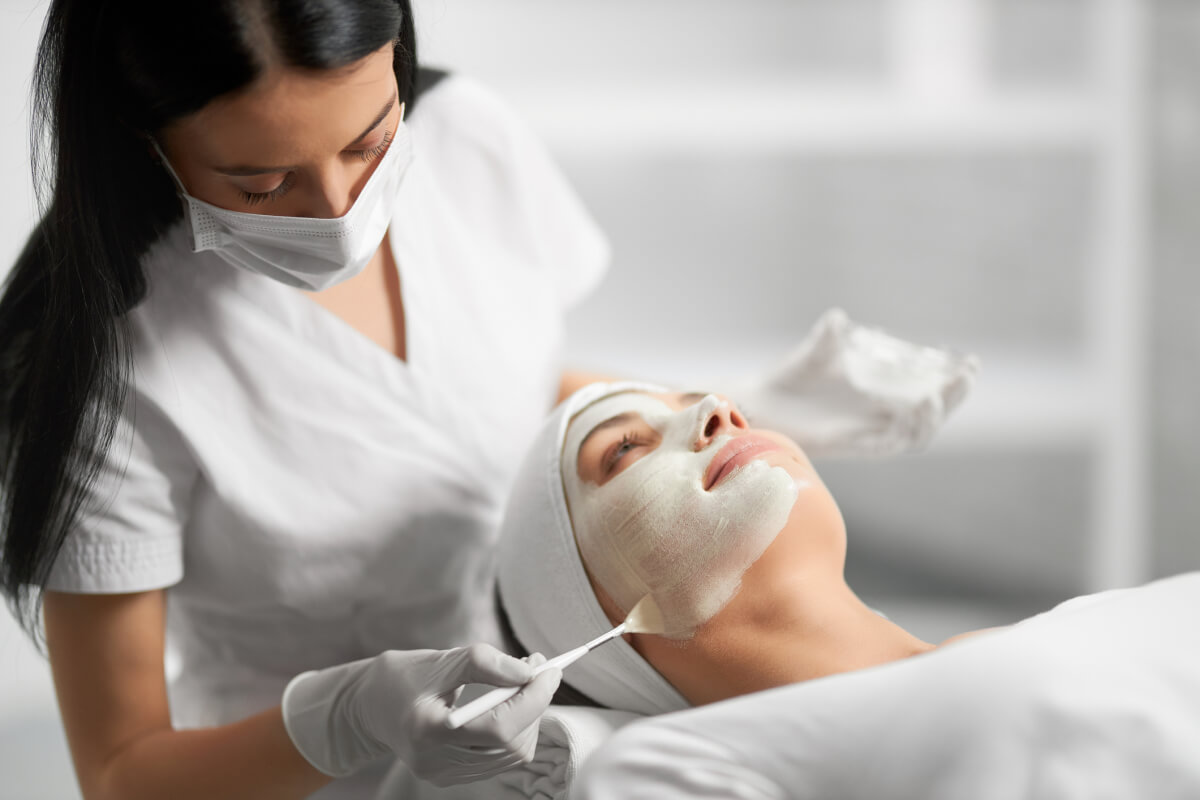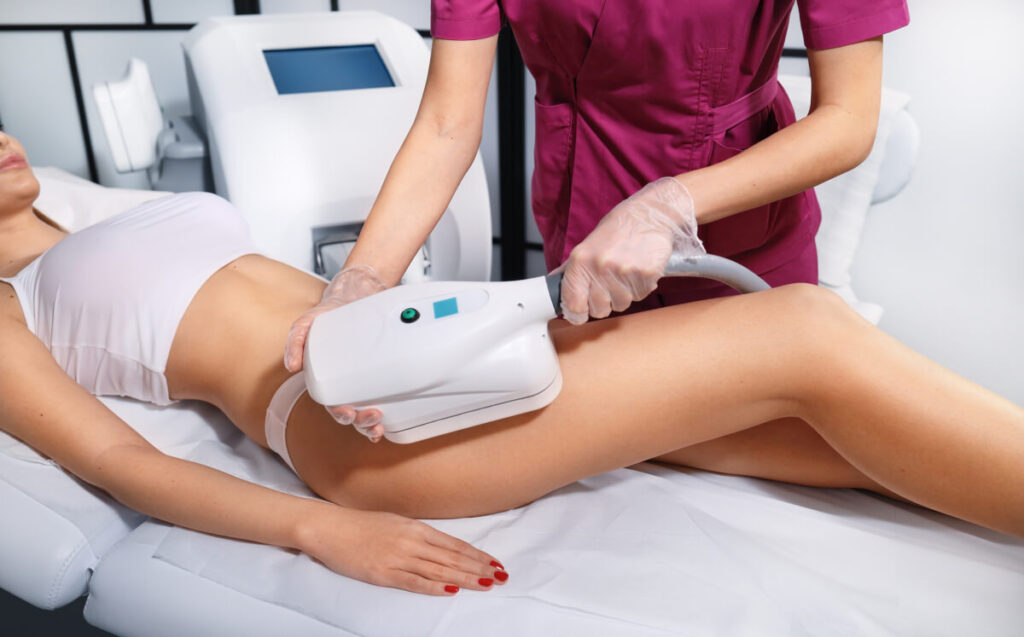While their line of work is similar, aestheticians and dermatologists aren’t exactly one and the same. Dermatologists cover a broader scope, treating conditions involving skin, nails, and hair. Aestheticians on the other hand are specialists who focus mainly on skincare. Dermatologists are known to have undergone intensive training before acquiring a license to practice, but for aestheticians, the standards can be much less strict.
So do you need to be licensed to be an aesthetician, especially if you want to perform body contouring or body sculpting? The answer depends on your state’s regulations, but in general, you do need to be at least trained to perform body contouring. For mastery of skill and an image of credibility to draw in more clients, it’s better to become licensed or board-certified.
Do You Need to be Licensed to Perform Body Sculpting?
Obtaining an aesthetician license especially to perform non-invasive body contouring procedures isn’t required by most states. However, it still pays to be trained and certified to perform these procedures to establish a trustworthy image to clients, and to minimize the chances of causing irreversible damage especially to the skin of the client.
To be certain, aspiring aestheticians should check with their state’s cosmetic or aesthetics regulatory body if they need to be licensed to perform non-invasive body contouring procedures. There are courses available from specialized schools that help prepare aspiring aestheticians to conduct different body contouring procedures.
Both classroom and hands-on clinical training are done to ensure your mastery of using body contouring tools and techniques.. Topics that might be covered during classroom sessions include:
- Body contouring theory, science, and practice
- Factors that contribute to the formation of excess fat and cellulite in the body
- Patient qualification and consultation
- Techniques for removing fat
- Possible adverse effects and how to deal with them
For the clinical practice portion, students are shown different body sculpting techniques by watching complete demonstrations of procedures, as well as getting real-world experience by treating clients firsthand with supervision from licensed and highly-trained practitioners. Aspiring aestheticians are all introduced to both invasive and non-invasive body sculpting procedures.
Non-Invasive Procedures
These procedures don’t involve extreme cutting or piercing through the skin. One good example of a non-invasive procedure is lipolysis, which employs cold, heat, lasers, and other techniques. Tucks, lifts, and liposuction on the other hand are invasive (i.e. surgical) alternatives. Surgery carries higher risks and requires a longer recovery period, but it usually produces more visible results.
Invasive Procedures
As invasive procedures tend to be surgical in nature, many states would require medically-trained and licensed individuals to perform these procedures. These procedures are typically performed at a surgeon’s office, surgical facility, or hospital. Depending on what’s being done, these operations might run anywhere from 45 minutes up to several hours.
Aesthetician Career Paths

As much as a license isn’t the be-all and end-all of an aesthetician’s professional career, obtaining one opens the door to a variety of other careers to pursue in the cosmetics and aesthetics industry. While licensed aestheticians can provide their clients with facials, waxing, and other skin care procedures,they may also get involved in cosmetology marketing, purchasing, or beauty consultancy. They may also pursue jobs as paramedical aestheticians in the medical field. Below are some popular careers for aspiring aestheticians:
Medical Aesthetician
Medical aestheticians frequently collaborate with doctors and are occasionally related with dermatology. The vast majority of their work is in the subject of skincare. They can offer a number of services ranging from client consultations to skincare routine and product suggestions.
They may assist patients in minimizing the appearance of numerous skin flaws, such as acne or surgical scars. Aestheticians may also be able to assist in reducing the effects of aging on the skin.
Makeup Artist
Working with makeup firms, an aesthetician can use their license to teach clients about makeup, such as the ideal shades of makeup for different skin tones, as well as makeup application techniques like contouring, highlighting,brow tinting, and sculpting, among many others. Aestheticians who specialize in makeup application can teach clients techniques and methods on how to properly cleanse and remove makeup, especially since their background is mainly on skincare.
Spa Aesthetician
An aesthetician often provides relaxation and pampering services in a spa setting, such as facials, face masks, body wraps and scrubs, and even non-therapeutic massage. Following an initial skin examination and consultation, they offer services such as brow tinting and shape, makeup application, and product recommendations for at-home use. They can also specialize in aromatherapy and other disciplines that require more training.
A spa is a common starting place for new aestheticians as it allows them to work with diverse clients and practice different types of services. It’s also an excellent alternative for those who appreciate collaborating with others and removing stress from people’s lives.
Aesthetics Instructor
Aesthetics educators are in charge of training the next generation of skincare professionals. To become a teacher, one must first become a licensed skin care professional, then get work experience before enrolling in an instructor training program. Esthetics instructors must have excellent people skills, a strong sense of initiative, and excellent time management abilities.
An aesthetics instructor teaches students who want to become certified estheticians or cosmetologists the theory and practice of cosmetology. In preparation for the certification exam, they teach students how to apply cosmetics and facials, tweeze and wax undesirable hair, and provide body treatments such as mud or seaweed wraps.
An instructor may also train certified estheticians who want to improve their abilities through continuing education. An aesthetics instructor may work for cosmetology schools, salons, and spas, or even advise state cosmetology board committees.
How to Obtain an Aesthetician License

Most professionals only really establish a credible image once they acquire a license for their practice. Necessary steps like programs and tests have to be completed before you achieve a status of legitimacy, and for more doors to be opened for you career-wise. If you’re looking for more career paths out there, here are the steps needed for aspiring aestheticians to obtain their license.
Complete an Approved Program
A typical aesthetics program includes a mix of practical operations like facials, waxing, and cosmetics application, as well as formal classroom-based and independent study in topics like safety and sanitation, physiology and anatomy of the skin, and infection control. These programs are widely used in training for salon and spa sales, business management, and marketing approaches.
The most common way to obtain the necessary education is to enroll in a formal aesthetics program at a cosmetology school or aesthetics school.
Most states require candidates for aesthetician license to finish an aesthetics program of at least 600 practice hours, while some states require significantly less (for example, Pennsylvania requires a curriculum of 300 practice hours). Other states demand much more (e.g., Texas requires a program of 750 practice hours.).
A number of states also consider apprenticeship completion as meeting the training/education requirements for licensure. However, apprenticeship practice hour requirements are typically longer than requirements for aesthetics programs in these states. In Delaware, for example, individuals may qualify for licensing by completing an aesthetics program of at least 600 hours in length or an apprenticeship of at least 1,200 hours in length.
Pass a State Aesthetician Exam
The next step in the license process entails taking and passing a theory (written) and practical (hands-on) examination to demonstrate the skills and knowledge gained through an aesthetics school or apprenticeship.
Before tests, the majority of states require candidates to apply for licensing so that eligibility can be validated. Most jurisdictions require candidates to be at least 16 years old and have a 10th grade education to qualify for licensing, but a few states need a high school diploma or the equivalent and/or a minimum age of 17.
Most states require licensing candidates to take both examinations, which are frequently constructed as state-specific tests. Some states currently use one or both of the National-Interstate Council on State Boards of Cosmetology’s (NIC) national esthetics tests. Currently, the NIC practical test is used in 13 states, and the NIC written examination is used in 28 states.
Maintain Licensure and Pursue Advanced Credentials
Aestheticians, like other state-licensed professions, are required to renew their licenses in accordance with state regulations. Most states require aesthetician licenses to be renewed biennially after submitting a renewal application and paying a fee.
Some states require aestheticians to complete a certain number of continuing education hours in order to keep their license, although the majority don’t. This does not, however, prevent licensed aestheticians from pursuing continuing education to ensure they are up to date on the newest breakthroughs, trends, and innovations in skincare.
As a way to provide more services to clients, many aestheticians choose to become licensed to conduct other treatments such as permanent cosmetics, massage therapy, and electrology.
The Commission on Accreditation (COA) was established by the National Coalition of Estheticians, Manufacturers/Distributors, and Associations (NCEA) to provide oversight and set standards for continuing education required to keep NCEA certification current, as well as for re-licensure in states where continuing education is required to maintain a license in good standing.
It’s also a widely-known practice among licensed aestheticians to study business, management, and marketing, as manya estheticians work as independent contractors or salon/spa managers, or eventually own their own aesthetics practice.
The Best Body Sculpting from Licensed Aestheticians at Ethos Spa
People use body contouring to look and feel leaner or to achieve a specific shape. It’s frequently used on specific regions of the body when diet and exercise are ineffective.
At Ethos Spa, we strive to help you achieve your dream proportions without having to worry about serious side effects or lengthy recovery times. Our team of licensed aestheticians and highly-trained staff are well-versed in the use of non-invasive body contouring equipment made just for your body goals.
Visit Ethos Spa or call us today to book a consultation.







